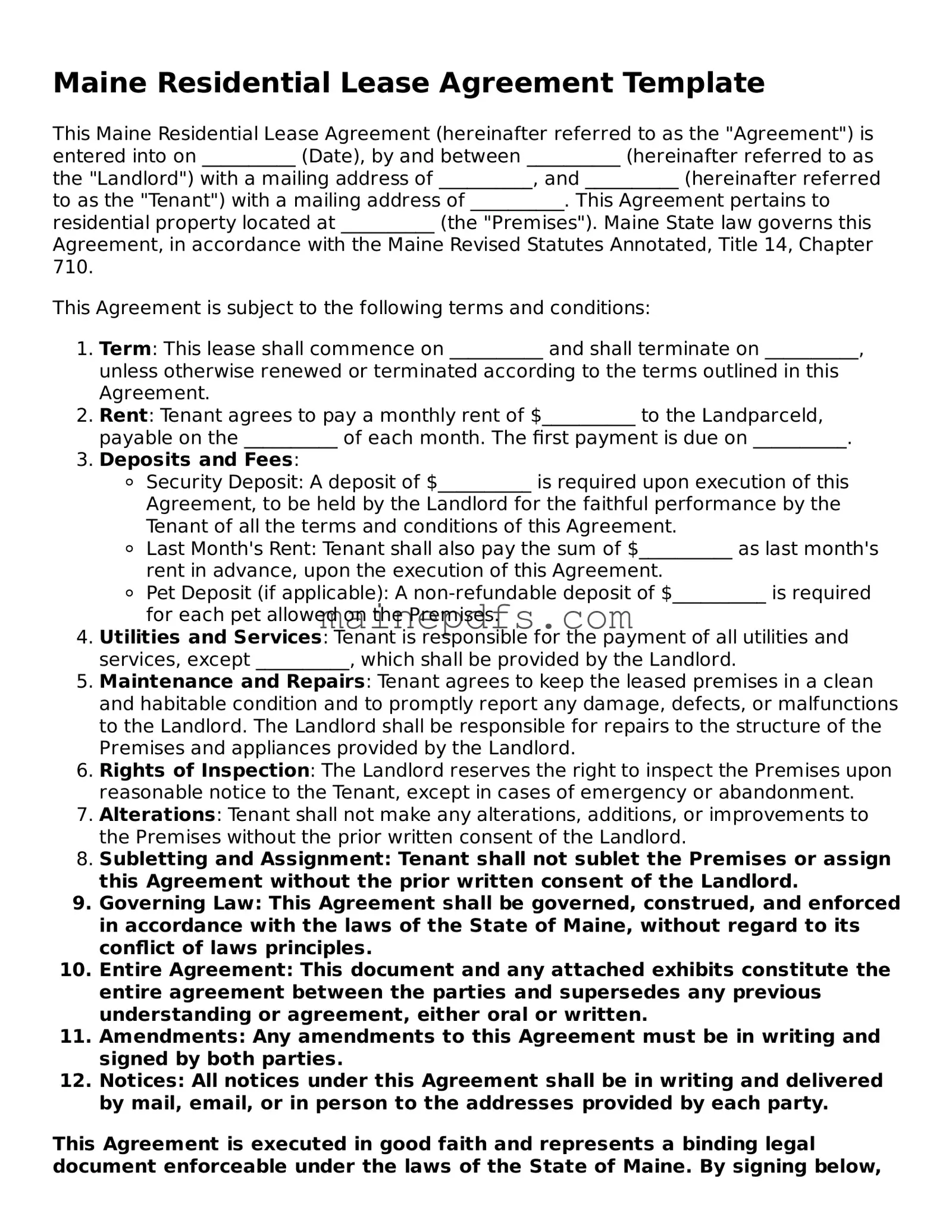The Maine Residential Lease Agreement is similar to a Rental Application Form. Both documents are used at the beginning of a tenant-landlord relationship. The Rental Application Form is typically the first step, where a potential tenant provides personal and financial information to a landlord. The Residential Lease Agreement, on the other hand, is the formal agreement that establishes the tenancy once the applicant is approved. Each document plays a crucial role in the vet that process, with one leading to the other.
Another document related to the Maine Residential Lease Agreement is a Security Deposit Receipt. This document is provided by the landlord to the tenant after receiving the security deposit, which is often required under the lease agreement. While the lease agreement outlines the terms and conditions of the tenancy, including the security deposit amount, the Security Deposit Receipt acts as proof of payment and outlines the conditions under which the deposit will be returned at the end of the lease.
The Move-In/Move-Out Inspection Checklist is also closely related to the Maine Residential Lease Agreement. Although it is a separate document, it directly complements the lease agreement by documenting the property's condition at both the beginning and end of the tenancy. This checklist is crucial for protecting both the tenant and landlord's interests, potentially influencing the return of the security deposit.
A Rent Increase Notice can be considered in connection with the Maine Residential Lease Agreement for leases that are not fixed-term or at their renewal. If the landlord intends to increase the rent, they must provide this notice to the tenant, with the specifics often governed by the initial lease agreement and state laws. This document underscores an aspect of the landlord-tenant relationship that may evolve over time.
An Eviction Notice is another critical document associated with residential lease agreements. Should a tenant violate the terms of the lease, an eviction notice is issued as a formal step towards termination of the lease. It's a legal instrument that signals the serious consequence of non-compliance with the lease agreement's terms.
The Sublease Agreement stands as a tangentially related document to the Maine Residential Lease Agreement. When a tenant wants to rent out the leased property to another individual, they use a Sublease Agreement, which requires the original landlord's consent according to most standard leases. This document allows for flexibility within the constraints of the original lease.
A Co-Signer Agreement is another document that often accompanies the Maine Residential Lease Agreement, especially when a tenant might not meet the financial criteria on their own. This agreement adds another layer of security for the landlord, with a co-signer agreeing to assume financial responsibility should the primary tenant fail to pay rent.
A Pet Agreement may also be relevant for tenants who have pets and wish to move into a rental property. This document amends the original lease agreement to outline terms and conditions regarding pets, providing clear rules and potential fees or deposits related to pet ownership on the property.
Lastly, the Lease Renewal Agreement is directly associated with the Maine Residential Lease Agreement. When a lease term comes to an end, both parties may wish to extend the tenancy. This document formalizes the continuation of the lease under the same or revised terms, ensuring that both the tenant and landlord are agreed on the conditions moving forward.
Property Management Agreements also share similarities with the Maine Residential Lease Agreement. While the lease agreement details the relationship between landlord and tenant, a Property Management Agreement outlines the relationship between the landlord and a hired property manager. This document specifies the manager's responsibilities, which can include enforcing lease terms, making or arranging for repairs, and collecting rent, thereby indirectly affecting the tenant's experience.
